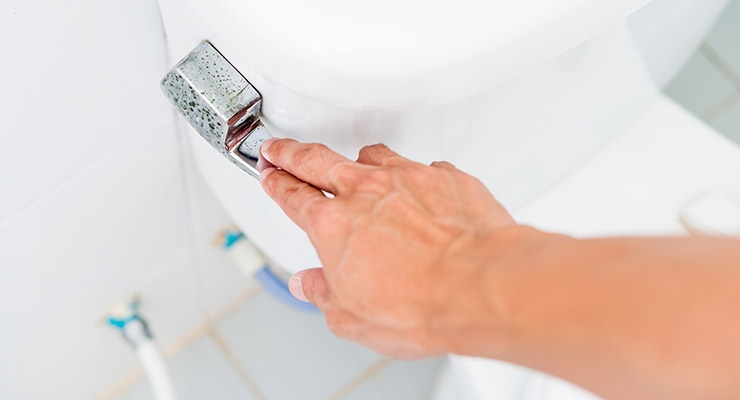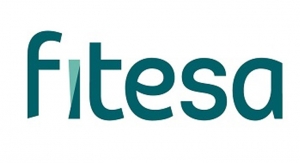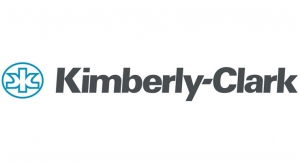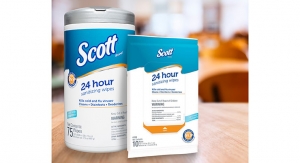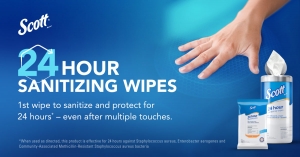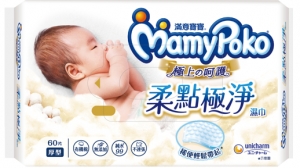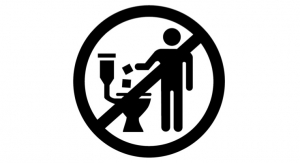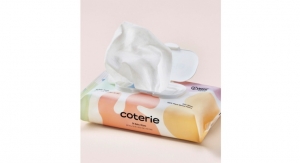Karen McIntyre, editor06.16.17
A team of industry experts closed out this year’s World of Wipes conference with a special session dedicated to one of the wipes industry’s hottest issues—flushability. Speakers provided WOW attendees with progress on the four central pillars of INDA’s flushability strategy—communication, code of practice, technical and legislative.
INDA president Dave Rousse moderated the session and opened with remarks on the current status of flushability guideline development efforts.
“We have successfully developed, in conjunction with the four major wastewater associations, a new code of practice that takes care of the labeling of 93% of wipes sold—the other 7% are the percentage of wipes sold that are designed to be flushable,” he says. “This demonstrates the progress that can be made when both sides take a rational and reasonable approach to change.”
However, efforts to develop a fourth edition of flushability standards (GD4) were stalled in January when the nonwovens industry’s collaboration with stakeholders in the wastewater industry came to an end. The wastewater industry wrote to INDA saying they were ending these efforts because no meaningful progress had been made since May 2016.
“In a perfect world, all people would agree that the real problem has been addressed—material science development and labeling---and we should not be able to embark on an awareness program that toilets are not trash cans (TANT),” Rousse adds. “Alas the world is not perfect and we are dealing with an angry wastewater sector that is not willing to acknowledge scientific data.”
According to INDA, the wastewater community was insisting on testing requirements that were far more rigorous than necessary.
“If industry were to accept the pass/fail criteria that wastewater industry stood beside, every flushable wipe on the market today would not pass those standards,” says INDA technical affairs director Jim Loftus. “That implies that every flushable wipe is incompatible with the wastewater systems. This is not something that industry can agree with.”
He adds the main problem between the nonwovens industry and wastewater agencies was failure to come to an agreement on the definition of the problem. For nonwovens, the problem is the improper flushing of non flushable materials—like baby wipes, feminine hygiene products and non flushable paper—whereas the wastewater groups see the improper flushing of incompatible flushable wipes as well as consumer confusion caused by the very existence of flushable products as the problem.
For now, the industry remains stuck at GD3, which Rousse describes as scientifically sound. “There is no evidence that a GD3 compliant wipe has caused damage, but it is not the minimum effort. We can go beyond GD3 but we have not updated the guidelines to reflect the advancements our industry has made in material science.”
So for now wastewater and nonwovens are moving forward pursuring different approaches. For wastewater this means establishing an international position statement and educating on the 3P’s—pee, poo, paper—that can (it says) be flushed. For nonwovens, the four committees dedicated to flushability will continue to fight litigation, legislation and the almost daily media assault that is blaming flushable wipes for sewage problems throughout the U.S. and the world when in fact the role of flushable wipes in sewage clogs is decreasing (down from 7% to 2% since 2010 according to analyses) even though sales volumes of these materials are increasing.
“This does potentially show a trend, the number of flushable wipes has gone up and baby wipes stayed the same yet you see more baby wipes and less flushable wipes (in clogs)…so what is the problem," Loftus says.
Central to INDA’s efforts will be consumer education, to help reduce the number of non-flushable items—like baby wipes—that are going down the toilet. The updated code of practices includes new labeling requirements that not only feature the do not flush more prominently on the outerpackaging of the wipe but also require the same logo be used at the point of use. Also, no baby wipe—regardless of its ability to disperse—can be marketed and labeled as being flushable to hopefully reduce consumer confusion about what can go in the toilet.
In fact, INDA admits the improper flushing of baby wipes is a growing problem. An recent analysis of clogs in the New York City subway showed that 38% of the material was non-flushable baby wipes, up from an analysis taken seven years ago.
“Too many people are flushing baby wipes and the assault on flushable wipes is not going to fix this problem,” says Richard Palmer, president of Nehemiah Manufacturing and a representative of the flushability communications committee. In fact, limiting the consumer's supply of flushable materials will only encourage the use—and flushing—of baby wipes.
To help address this, INDA and its partners have developed the Responsible Flushing Alliance to promote consumer awareness about what should and should not be flushed. “Individual companies should use their marketing resources and their public relations resources to share this information because it is something that we as an industry has done a poor job of doing,” he adds.
INDA president Dave Rousse moderated the session and opened with remarks on the current status of flushability guideline development efforts.
“We have successfully developed, in conjunction with the four major wastewater associations, a new code of practice that takes care of the labeling of 93% of wipes sold—the other 7% are the percentage of wipes sold that are designed to be flushable,” he says. “This demonstrates the progress that can be made when both sides take a rational and reasonable approach to change.”
However, efforts to develop a fourth edition of flushability standards (GD4) were stalled in January when the nonwovens industry’s collaboration with stakeholders in the wastewater industry came to an end. The wastewater industry wrote to INDA saying they were ending these efforts because no meaningful progress had been made since May 2016.
“In a perfect world, all people would agree that the real problem has been addressed—material science development and labeling---and we should not be able to embark on an awareness program that toilets are not trash cans (TANT),” Rousse adds. “Alas the world is not perfect and we are dealing with an angry wastewater sector that is not willing to acknowledge scientific data.”
According to INDA, the wastewater community was insisting on testing requirements that were far more rigorous than necessary.
“If industry were to accept the pass/fail criteria that wastewater industry stood beside, every flushable wipe on the market today would not pass those standards,” says INDA technical affairs director Jim Loftus. “That implies that every flushable wipe is incompatible with the wastewater systems. This is not something that industry can agree with.”
He adds the main problem between the nonwovens industry and wastewater agencies was failure to come to an agreement on the definition of the problem. For nonwovens, the problem is the improper flushing of non flushable materials—like baby wipes, feminine hygiene products and non flushable paper—whereas the wastewater groups see the improper flushing of incompatible flushable wipes as well as consumer confusion caused by the very existence of flushable products as the problem.
For now, the industry remains stuck at GD3, which Rousse describes as scientifically sound. “There is no evidence that a GD3 compliant wipe has caused damage, but it is not the minimum effort. We can go beyond GD3 but we have not updated the guidelines to reflect the advancements our industry has made in material science.”
So for now wastewater and nonwovens are moving forward pursuring different approaches. For wastewater this means establishing an international position statement and educating on the 3P’s—pee, poo, paper—that can (it says) be flushed. For nonwovens, the four committees dedicated to flushability will continue to fight litigation, legislation and the almost daily media assault that is blaming flushable wipes for sewage problems throughout the U.S. and the world when in fact the role of flushable wipes in sewage clogs is decreasing (down from 7% to 2% since 2010 according to analyses) even though sales volumes of these materials are increasing.
“This does potentially show a trend, the number of flushable wipes has gone up and baby wipes stayed the same yet you see more baby wipes and less flushable wipes (in clogs)…so what is the problem," Loftus says.
Central to INDA’s efforts will be consumer education, to help reduce the number of non-flushable items—like baby wipes—that are going down the toilet. The updated code of practices includes new labeling requirements that not only feature the do not flush more prominently on the outerpackaging of the wipe but also require the same logo be used at the point of use. Also, no baby wipe—regardless of its ability to disperse—can be marketed and labeled as being flushable to hopefully reduce consumer confusion about what can go in the toilet.
In fact, INDA admits the improper flushing of baby wipes is a growing problem. An recent analysis of clogs in the New York City subway showed that 38% of the material was non-flushable baby wipes, up from an analysis taken seven years ago.
“Too many people are flushing baby wipes and the assault on flushable wipes is not going to fix this problem,” says Richard Palmer, president of Nehemiah Manufacturing and a representative of the flushability communications committee. In fact, limiting the consumer's supply of flushable materials will only encourage the use—and flushing—of baby wipes.
To help address this, INDA and its partners have developed the Responsible Flushing Alliance to promote consumer awareness about what should and should not be flushed. “Individual companies should use their marketing resources and their public relations resources to share this information because it is something that we as an industry has done a poor job of doing,” he adds.

